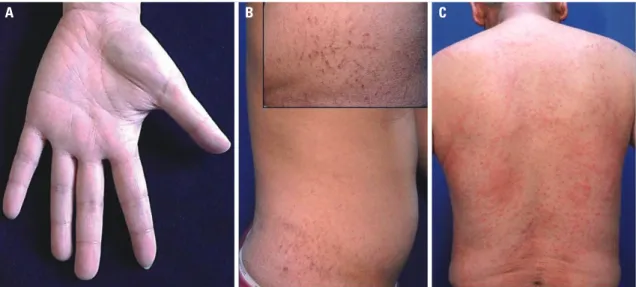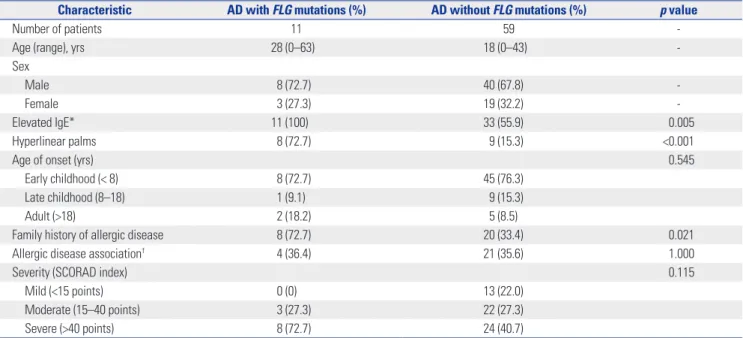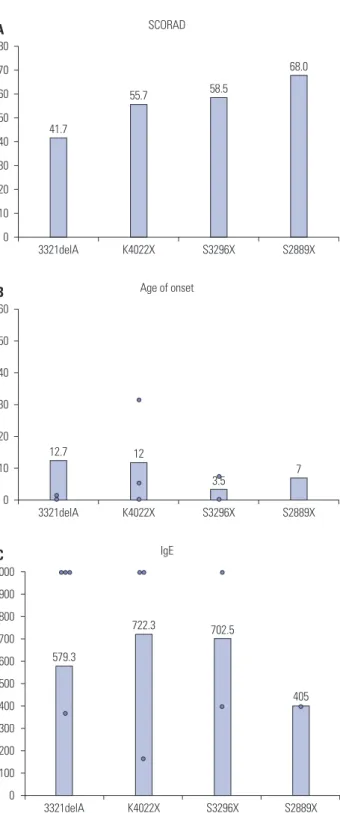Filaggrin Mutation in Korean Patients with Atopic Dermatitis
전체 글
수치




관련 문서
• Theory can extent to molten polymers and concentrated solutions.. The single-molecule bead spring models.. a)
Prevention of coronary and stroke events with atorvastatin in hypertensive patients who have average or lower-than-average cholesterol concentrations, in
The greater tubercle is palpable on the line from the lateral epicondyle of the distal humerus in the direction of the humeral longitudianl axis and just below the acromion
The Incomplete diffuse type PVD found primarily in patients with diabetic retinopathy and retinal detachment and complete diifuse type PVD found primarily in patients
Japanese compound verbs are classified as follows in the aspects of composition : ① combination of verbs with verbs, ② combination of nouns with verbs,
Results: In this research, in the group with fibromyalgia patients group, systemic lupus erythematosus patients group and without systemic autoimmune
The paper aims to analyze the 'Japanese Military Sexual Slavery' narrative and its perspectives in high school Korean history textbooks based on academia's
Activating mutation in the tyrosine kinase JAK2 in polycythemia vera, essential thrombocythemia and myeloid metaplasia with myelofibrosis.. A gain-of-function